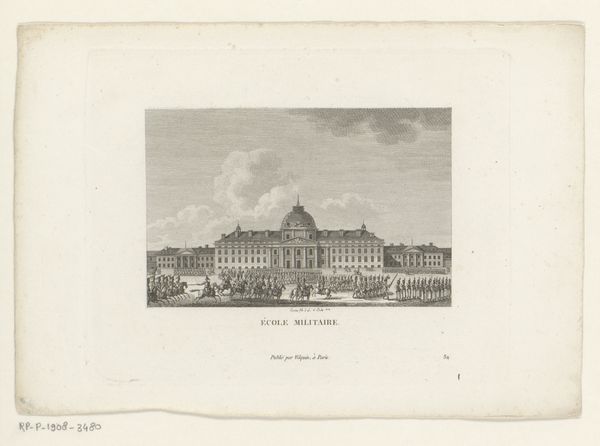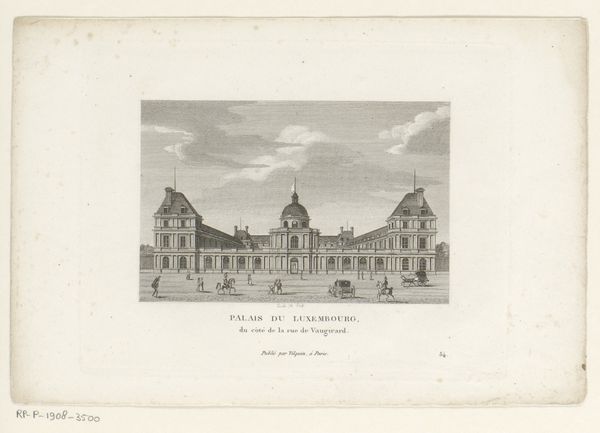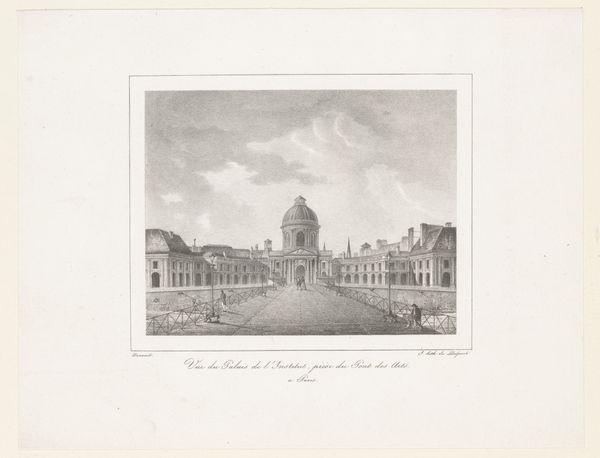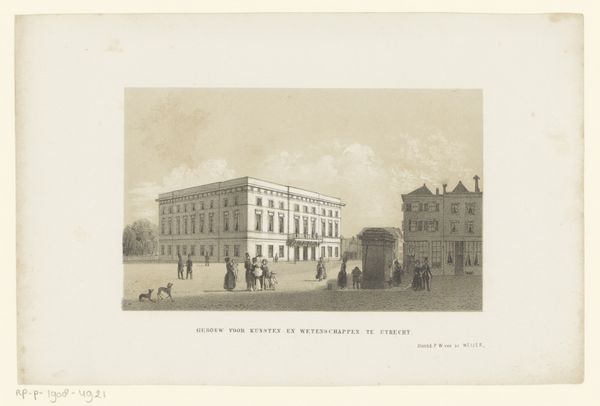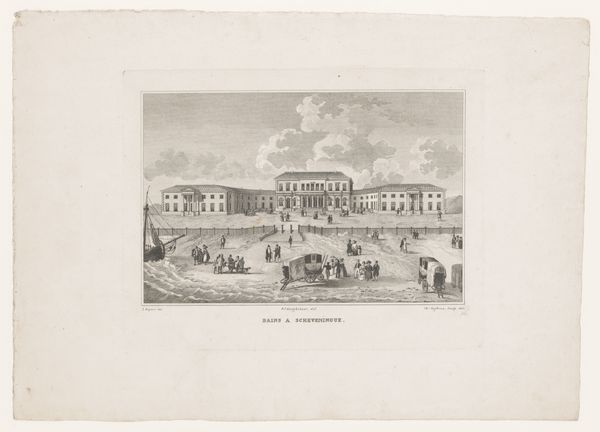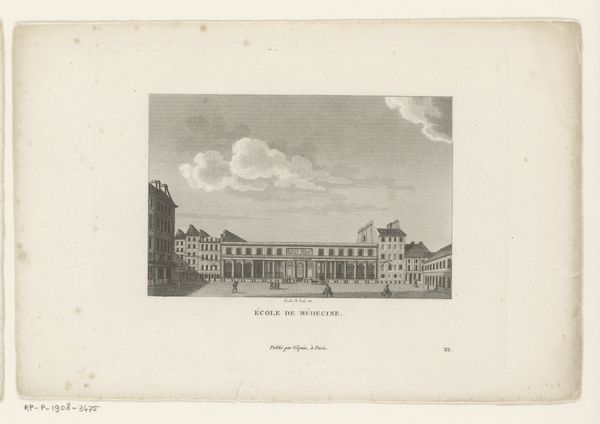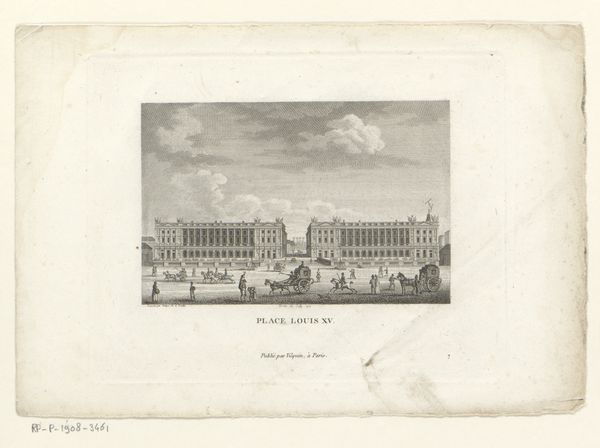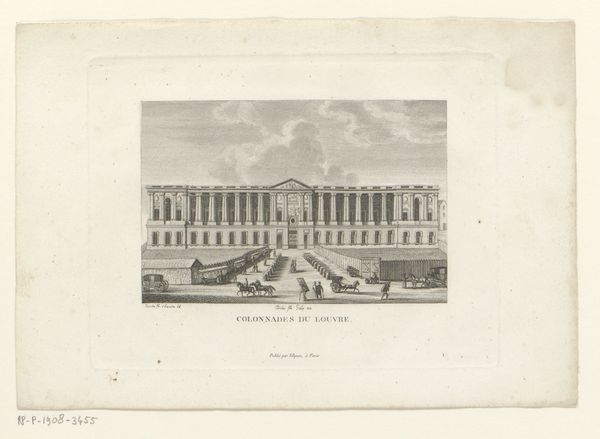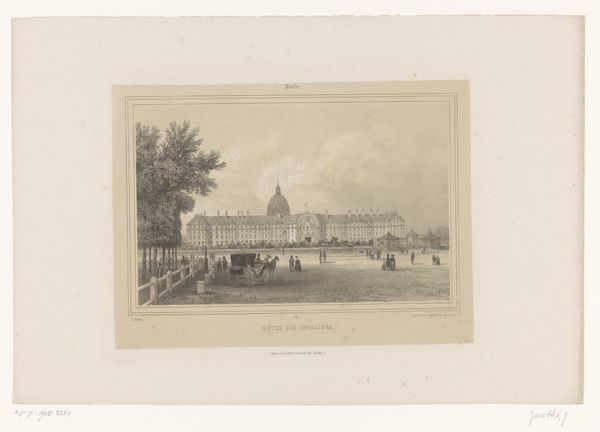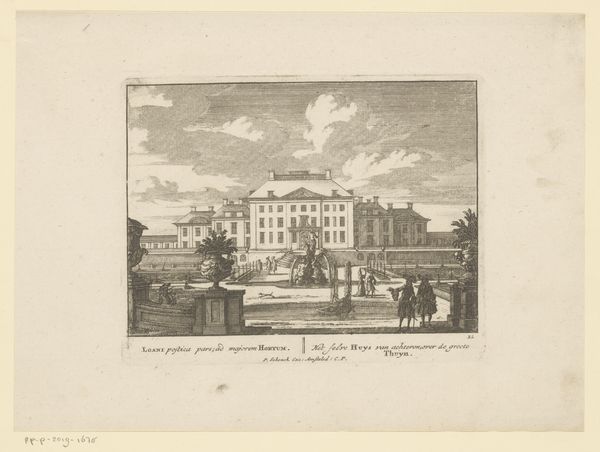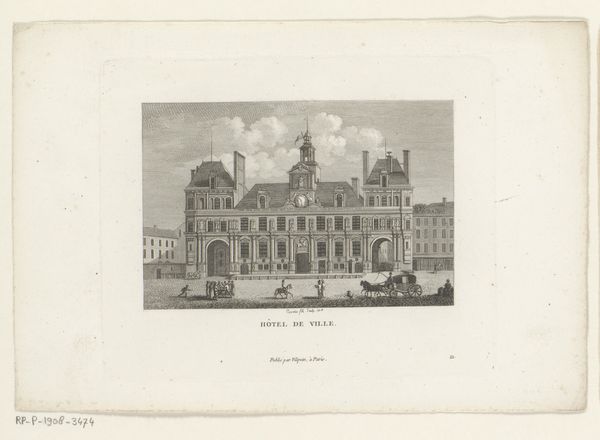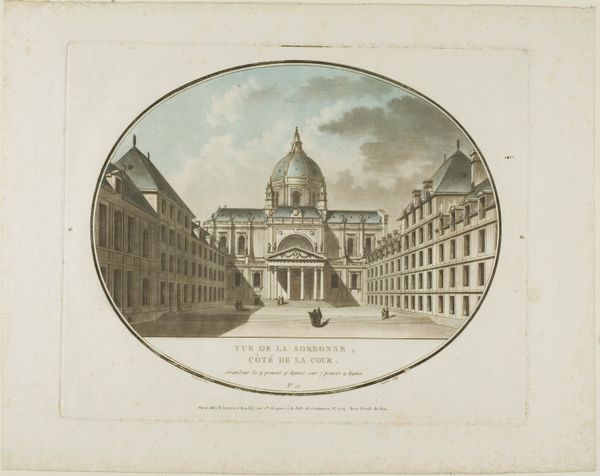
print, engraving, architecture
#
neoclacissism
# print
#
cityscape
#
engraving
#
architecture
Dimensions: height 126 mm, width 159 mm
Copyright: Rijks Museum: Open Domain
Editor: This is an engraving from 1818 by François Louis Couché, titled "Gezicht op het Hôtel des Invalides te Parijs", which translates to "View of the Hôtel des Invalides in Paris." The precision and detail give it a very formal, almost documentarian feel. How do you interpret this work in terms of its historical context? Curator: It’s fascinating to consider the role prints like these played in shaping public perception. In the early 19th century, before photography, engravings disseminated images of power and progress. Hôtel des Invalides, originally a royal veterans' hospital, embodied a specific kind of state care, and by 1818, was being positioned in the context of Napoleonic war veterans and Imperial ambitions. Consider how the crisp lines and balanced composition evoke order and authority, reinforcing a sense of national pride and the importance of civic institutions. Who do you think the intended audience was? Editor: Perhaps a middle-class audience interested in civic affairs and the architectural achievements of Paris? People who may not have had the opportunity to visit themselves? Curator: Precisely. And think about what that image *does*. It constructs a specific narrative about Paris and its values. This is not simply a building; it’s a representation of power and social responsibility being circulated to a growing public. The neo-classical architecture also reinforces this idea through association with ancient concepts of republican virtue. Note the position 'du côté de la Riviere' – by showing the building from the river, the artist makes it part of the city itself, easily accessible. What message does the landscape, devoid of people and focusing on accessibility, convey? Editor: It creates a sense of civic openness, suggesting the institution is approachable. It’s interesting how a seemingly simple architectural study becomes a piece of political messaging. Curator: Exactly! Understanding its social and cultural role at the time enhances our appreciation of the piece. It is a statement of the strength and progress of Paris in a time of much political change. Editor: I never would have considered it in that light! Thank you for shining new light on it!
Comments
No comments
Be the first to comment and join the conversation on the ultimate creative platform.
